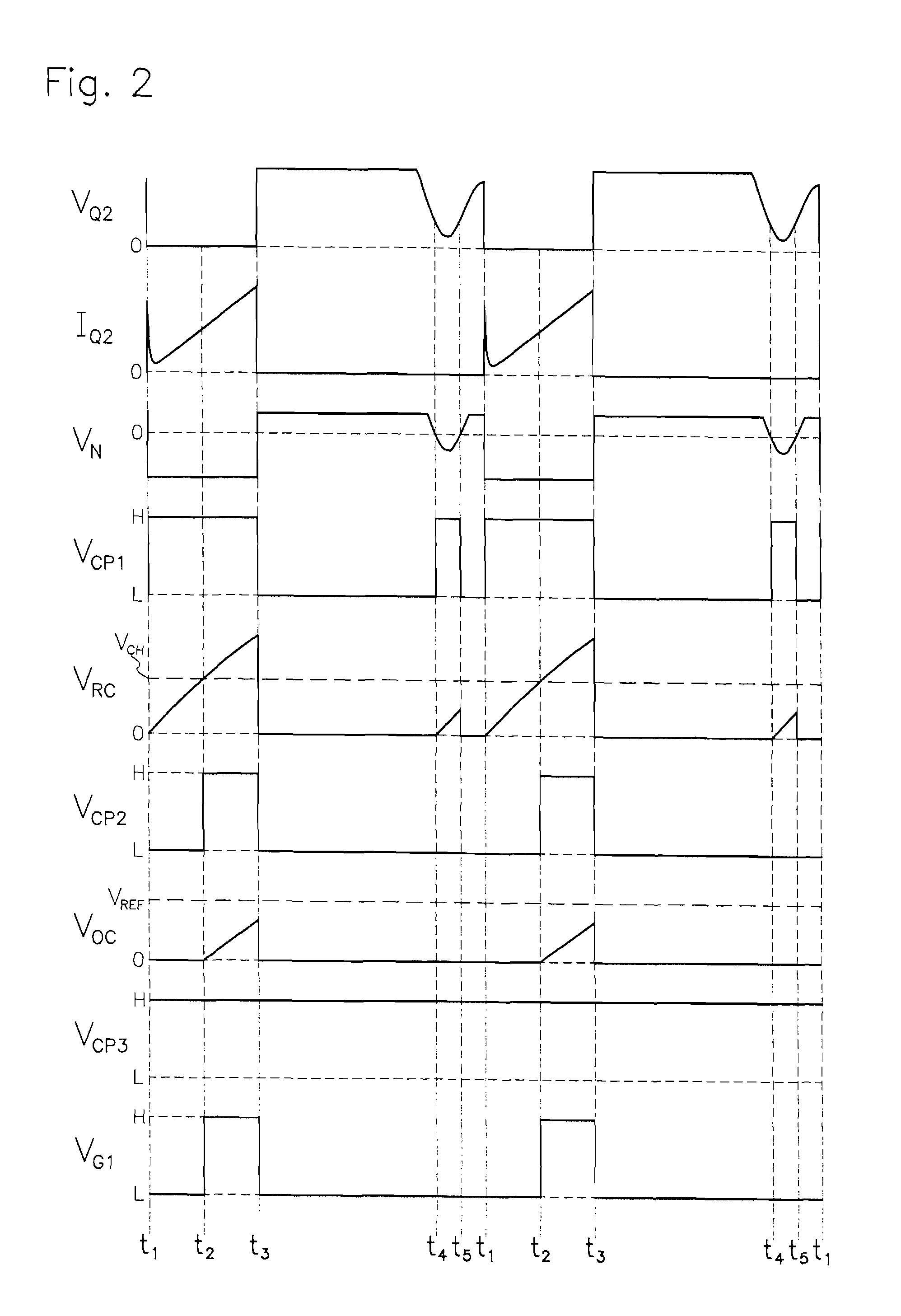AC-DC converter
a converter and ac-dc technology, applied in the direction of electric variable regulation, process and machine control, instruments, etc., can solve the problems of disadvantageous defects of ac-dc converters, disadvantageous output voltages of ac-dc converters, and low output voltages, so as to improve input power factor, reduce power consumption, and curb fluctuation of output voltage
- Summary
- Abstract
- Description
- Claims
- Application Information
AI Technical Summary
Benefits of technology
Problems solved by technology
Method used
Image
Examples
Embodiment Construction
[0023]An embodiment of the AC-DC converter according to the present invention is described hereinafter with reference to FIGS. 1 to 5 of the drawings. Same symbols are applied to substantially same parts in FIGS. 1 to 5 as those shown in FIGS. 6 and 7, and their explanation is omitted.
[0024]As shown in FIG. 1, the AC-DC converter according to the present embodiment comprises an auxiliary winding 8c in electro-magnetic coupling with primary winding 8a of transformer 8 shown in FIG. 6 in the adverse polarity, and a chopper control circuit (chopper controller) 50 connected to auxiliary winding 8c. Chopper controller 50 comprises a winding voltage detecting circuit (winding voltage detector) 21 for detecting voltage VN appearing on auxiliary winding 8c by on-off operation of main MOS-FET 9 in DC-DC converter 10 to produce an output signal VCP1 of high voltage level when auxiliary winding 8c produces one-sided or negative voltage VN, a waveform shaper 23 for generating a linearly rising ...
PUM
 Login to View More
Login to View More Abstract
Description
Claims
Application Information
 Login to View More
Login to View More - R&D
- Intellectual Property
- Life Sciences
- Materials
- Tech Scout
- Unparalleled Data Quality
- Higher Quality Content
- 60% Fewer Hallucinations
Browse by: Latest US Patents, China's latest patents, Technical Efficacy Thesaurus, Application Domain, Technology Topic, Popular Technical Reports.
© 2025 PatSnap. All rights reserved.Legal|Privacy policy|Modern Slavery Act Transparency Statement|Sitemap|About US| Contact US: help@patsnap.com



